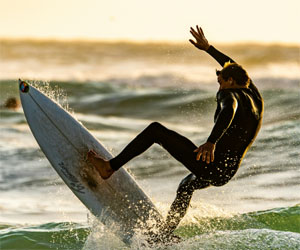



In the thrilling world of paintball, where strategy meets adrenaline, cunning tactics play a crucial role in outsmarting opponents and achieving victory. Paintball is more than just a recreational pursuit; it's an intricate dance of wits, teamwork, and individual skill, all on a canvas of adventure. In this article, we'll explore the art of cunning tactics in paintball and how they can make the difference between triumph and defeat on the battlefield.
Concealment And Ambushes: One of the oldest tricks in the book, concealing your presence and setting up ambushes can catch your opponents off guard. Blend into your surroundings, take advantage of natural cover, and wait for your opponents to walk into your line of fire.
Suppressive Fire: Suppressing your opponents by laying down a barrage of paintballs keeps their heads down and prevents them from making strategic moves. This tactic can provide cover for your teammates to advance or reposition.
Flanking Maneuvers: Outflanking your opponents is a classic cunning tactic. By taking a wide route to the side or rear, you can catch them in a crossfire, making it difficult for them to defend themselves effectively.
Communication And Coordination: Effective communication is a cornerstone of cunning tactics in paintball. Work with your team to share information about the enemy's positions and movements. Coordinate your actions to capitalize on weaknesses in your opponent's defenses.
Bait And Switch: Use one player as bait to draw opponents into a trap. When your opponent focuses on the bait, the rest of your team can ambush them from multiple angles.
Decoy Distractions: Create distractions to divert your opponents' attention. Throwing paintballs in one direction or using smoke grenades can confuse the enemy and give you an opportunity to move or attack strategically.
Pinning Down The Enemy: By keeping opponents under continuous fire, you can pin them in a particular location, restricting their movements and making them easier targets.
Dynamic Movement: Change your position frequently to keep your opponents guessing. A moving target is harder to hit, and dynamic movement tactics can disrupt your opponent's aim.
Counter-Sniping: If an opponent is consistently picking off your teammates from a hidden position, employ counter-sniping tactics to eliminate or suppress them.
Mind Games: Use psychological tactics to unnerve opponents. Taunts, distractions, or misleading information can create opportunities for cunning play.
To master cunning tactics in paintball, practice is essential. Regularly engage in paintball matches to develop your skills and adapt to different scenarios. Experiment with various tactics to find what suits your playing style and the dynamics of your team.
Ultimately, the art of cunning tactics in paintball is about adapting and outsmarting your opponents. Whether you prefer stealthy approaches or aggressive strategies, cunning tactics can be the key to turning the tide of the game in your favor. By honing your wits and teamwork, you'll not only enjoy the thrill of paintball but also find success in the heart-pounding realm where strategy and adrenaline collide.
A Beginner's Guide
 1. The Objective: The primary goal in Ultimate Frisbee is to score points by catching the disc in the opposing team's end zone. Each team has seven players on the field, and the game is typically played until one team reaches a predetermined number of points.
1. The Objective: The primary goal in Ultimate Frisbee is to score points by catching the disc in the opposing team's end zone. Each team has seven players on the field, and the game is typically played until one team reaches a predetermined number of points.
2. Starting Play: A game of Ultimate begins with a "pull," which is essentially a throw-off. One team pulls the disc to the other to initiate play. The receiving team then attempts to advance the disc up the field through passing and catch the disc in the opposing team's end zone.
3. Movement And Passing: Players move the disc down the field through a series of passes. When a player has possession of the disc, they cannot move, only pivot on one foot. They must establish a pivot foot before passing the disc to a teammate. Passing is done by throwing the disc to a teammate, who aims to catch it. Passing techniques include forehand, backhand, and hammer throws.


Embracing The Call Of The Untamed
 Embracing The Unknown: Exploration and adventure in the wild often involve stepping out of one's comfort zone and embracing the unknown. It's about challenging oneself physically and mentally, venturing into unfamiliar terrain, and experiencing the thrill of the unexpected.
Embracing The Unknown: Exploration and adventure in the wild often involve stepping out of one's comfort zone and embracing the unknown. It's about challenging oneself physically and mentally, venturing into unfamiliar terrain, and experiencing the thrill of the unexpected.
Serenity In The Wilderness: One of the most profound aspects of venturing into the wild is the serenity it provides. In the midst of remote forests, vast deserts, or towering mountains, the noise of the modern world fades away, replaced by the sounds of nature. It's an opportunity to reconnect with one's inner self and experience profound moments of peace and introspection.
Challenging Terrains: Conquering challenging terrains is a central element of wild exploration. From scaling towering peaks to navigating dense jungles or traversing arid deserts, each terrain presents its own unique set of challenges. These challenges test one's physical and mental fortitude, fostering growth and self-discovery.
The Thrill Of The Unknown: The thrill of the unknown is an exhilarating aspect of wild adventure. Every twist and turn in the trail, every hidden waterfall or secret cave, and every encounter with wildlife or the elements provides a rush of excitement. The element of surprise keeps adventurers engaged and creates lasting memories.
Connecting With Nature: Exploration and adventure in the wild allow individuals to connect with nature on a deep and personal level.
Embracing The Serenity Of Winter Sports
 2. The Joy Of Fresh Tracks: One of the most exhilarating aspects of gliding down pristine slopes is the opportunity to create fresh tracks. Each descent is a blank canvas awaiting your unique imprint, allowing you to write your story in the snow. There's a sense of freedom and liberation in leaving your mark on the mountain.
2. The Joy Of Fresh Tracks: One of the most exhilarating aspects of gliding down pristine slopes is the opportunity to create fresh tracks. Each descent is a blank canvas awaiting your unique imprint, allowing you to write your story in the snow. There's a sense of freedom and liberation in leaving your mark on the mountain.
3. A Symphony Of Silence: Gliding down pristine slopes often comes with a soundtrack of serenity. The only sounds are the swish of your skis or the carve of your snowboard on the snow and the gentle whisper of the wind. The tranquility of the winter landscape is an escape from the noise of everyday life.
4. The Magic Of First Light: Early mornings on the slopes offer a magical experience. As the first rays of sunlight touch the pristine snow, they create a sparkling, crystalline world that seems almost surreal. The interplay of light and shadow on the slopes is an awe-inspiring sight to behold.
5. A Connection With Nature: Gliding down pristine slopes is not just a physical activity; it's a communion with the natural world. As you navigate the terrain, you're intimately connected to the mountains, the snow, and the elements. It's an opportunity to be in harmony with nature.
6. The Thrill Of Fresh Powder: Fresh powder snow, also known as "powder," is a holy grail for skiers and snowboarders. The feeling of effortlessly gliding through knee-deep powder is unlike any other experience. It's like floating on a cloud, and each turn through the powder is a moment of pure exhilaration.
Surfboard Designs For Beginners
 Volume: Longboards have ample volume, aiding in buoyancy and making it easier for novice surfers to catch smaller waves.
Volume: Longboards have ample volume, aiding in buoyancy and making it easier for novice surfers to catch smaller waves.
Longboards are perfect for learning the basics of paddling, balancing, and wave-catching. They offer a forgiving platform for new surfers, allowing them to gain confidence and experience the joy of riding waves.
Foam Boards: The Soft Landing
Foam boards, or soft-top surfboards, are another excellent choice for beginners. These boards are constructed with a soft, foam-covered deck, making them exceptionally safe for newcomers. Key features of foam boards include:
Safety: Foam boards reduce the risk of injury during falls, thanks to their soft construction.
Buoyancy: They offer sufficient buoyancy for easy paddling and wave-catching.
Stability: The wide and stable platform helps beginners find their balance.
The forgiving nature of foam boards makes them a popular choice for surf schools and those learning to surf for the first time.
The Key To Longevity In Sports
 2. Proper Technique And Form: Training in the correct technique and form is crucial to preventing injuries. Athletes must learn how to execute movements and actions accurately to reduce the risk of injury.
2. Proper Technique And Form: Training in the correct technique and form is crucial to preventing injuries. Athletes must learn how to execute movements and actions accurately to reduce the risk of injury.
3. Warm-Up And Cool-Down: Effective warm-up routines prepare the body for exercise by increasing blood flow and raising body temperature. Cool-downs help the body recover and prevent muscle soreness. Both are vital components of injury prevention.
4. Nutrition And Hydration: Proper nutrition and hydration support overall health and recovery. Athletes should maintain a balanced diet to provide the necessary fuel for the body and stay well-hydrated to perform at their best.
5. Rest And Recovery: Adequate rest and recovery are critical for preventing overuse injuries. Sleep and relaxation are key to allowing the body to repair and regenerate. Overtraining can lead to fatigue and an increased risk of injury.
6. Mental Resilience: Incorporating mental health and resilience training can help athletes cope with the stress and pressure of competition. A strong mental state can also help athletes make better decisions and reduce the risk of impulsive actions that can lead to injuries.
7. Listen To The Body: Athletes must pay attention to their bodies and listen to the signals they provide. Pain, discomfort, or unusual sensations can be indicators of potential injuries. Ignoring these signals can lead to severe problems.
8. Injury Prevention Workshops: Attending injury prevention workshops and classes can provide athletes with specialized techniques and strategies to reduce injury risks in their chosen sport. These workshops are often facilitated by experts and can offer valuable insights.